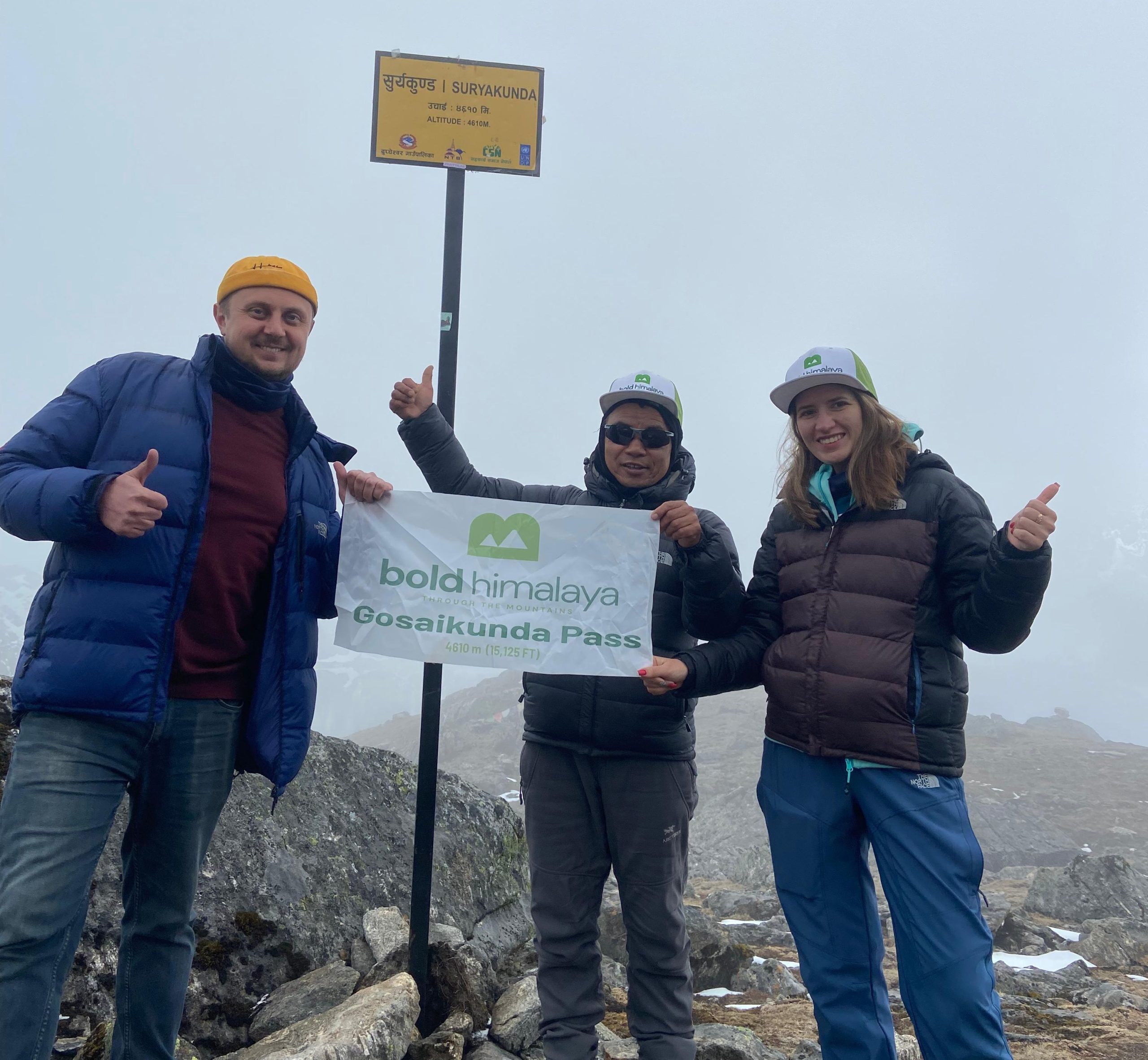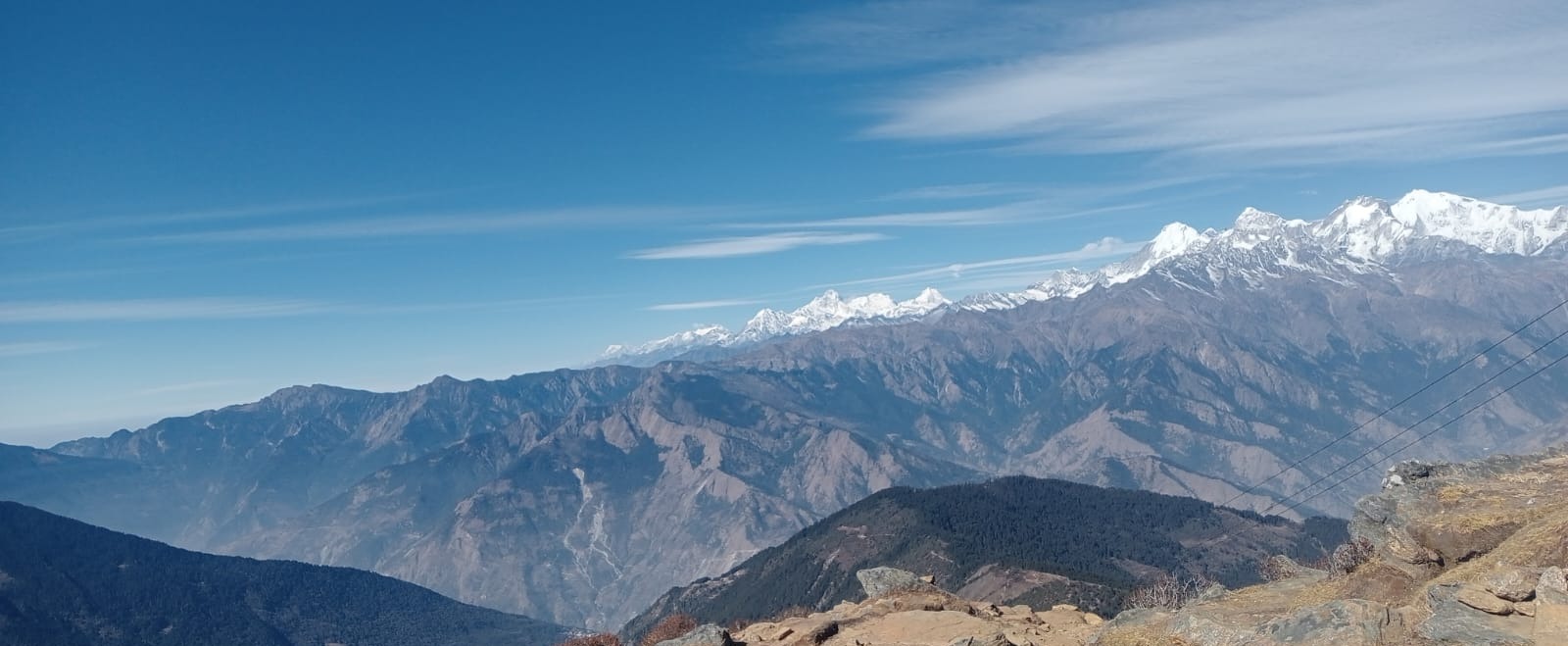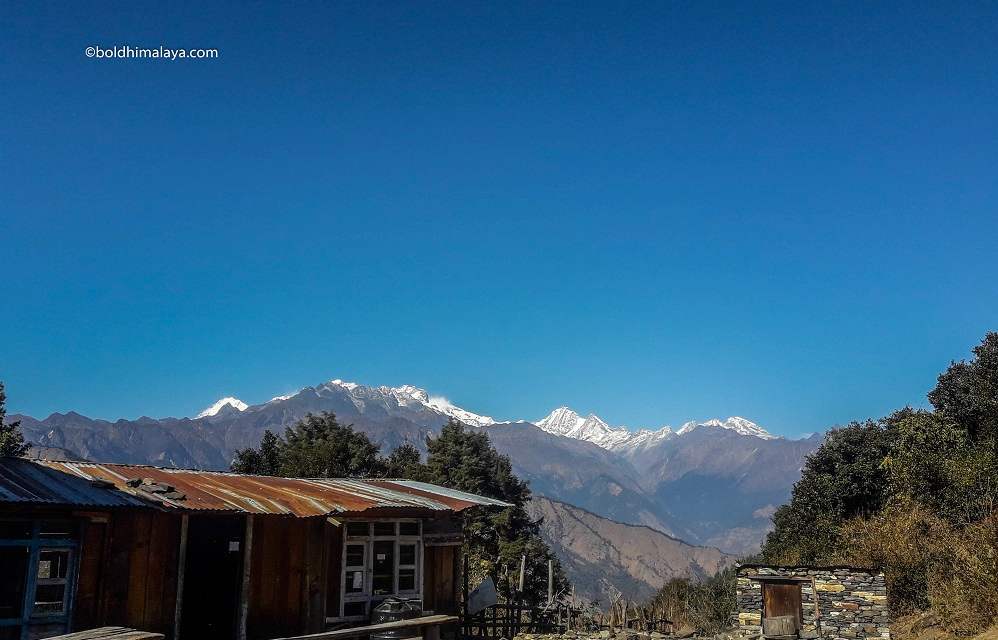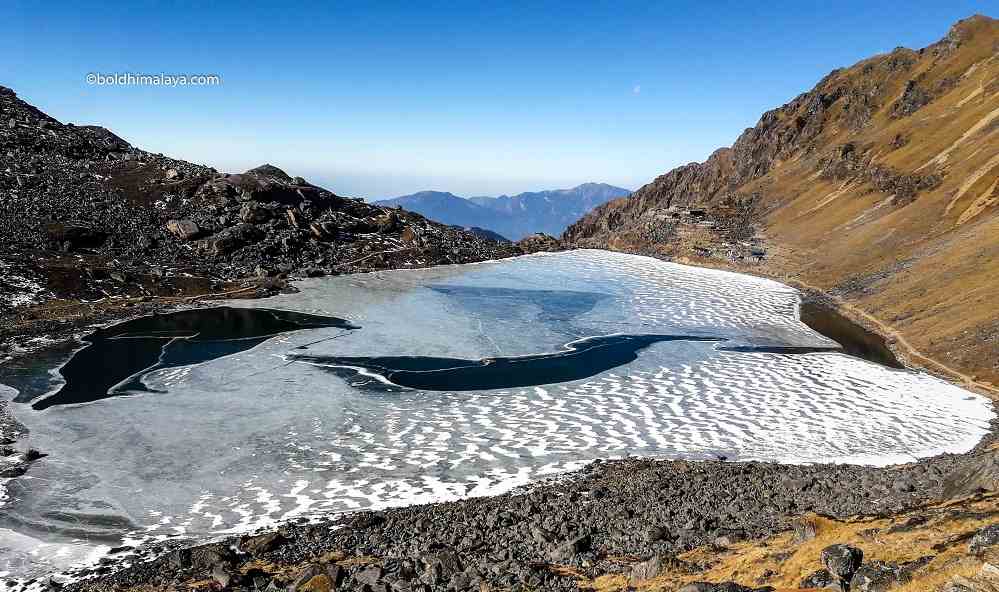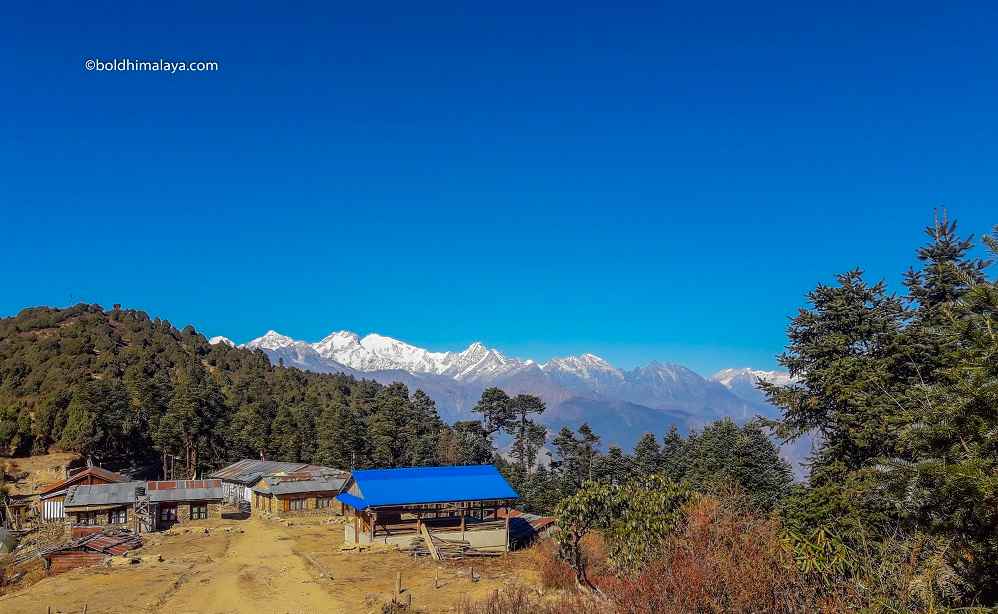Gosaikunda Lake Trek
Itinerary
Your Journey, Step by Step
Inclusions
What’s Covered in Your Adventure
- All ground transportation (including trekking starting/ending point, airport pick up/drop) by private tourist vehicles as per itinerary.
- Three-star category hotel in the city(Kathmandu) in twin sharing bed with breakfast basis & standard trekking lodge in Langtang Valley Ganjala pass trekking route.
- Full meals during trekking as mentioned in the itinerary (Breakfast, Lunch, Dinner with tea or coffee )
- Everyday seasonal fruits & snakes during the trek
- Langtang National Park Area Trekking permit, & TIMS card (Trekkers Information Management System)
- Experienced, licensed one trekking guide up to five trekkers in the group including their salary, accommodation, meals, and their insurance
- One porter to carry your luggage (for two guests one porter to carry baggage) including their salary, accommodation, meals, transportation, and insurance
- One special cultural show and farewell dinner program
- First aid medicine & kit
- Government tax, Service charge & local taxes
- Extra Lunch & Dinner in Kathmandu
- Dessert & any types of drinks during the trip
- Kathmandu city tour entrance fee
- Your international air ticket & travel insurance
- Tips for the trekking crew members
Gosaikunda Lake Trek Map with Altitude
Details Map with Altitude Chart of Gosakunda Lake Trek and Side Routes
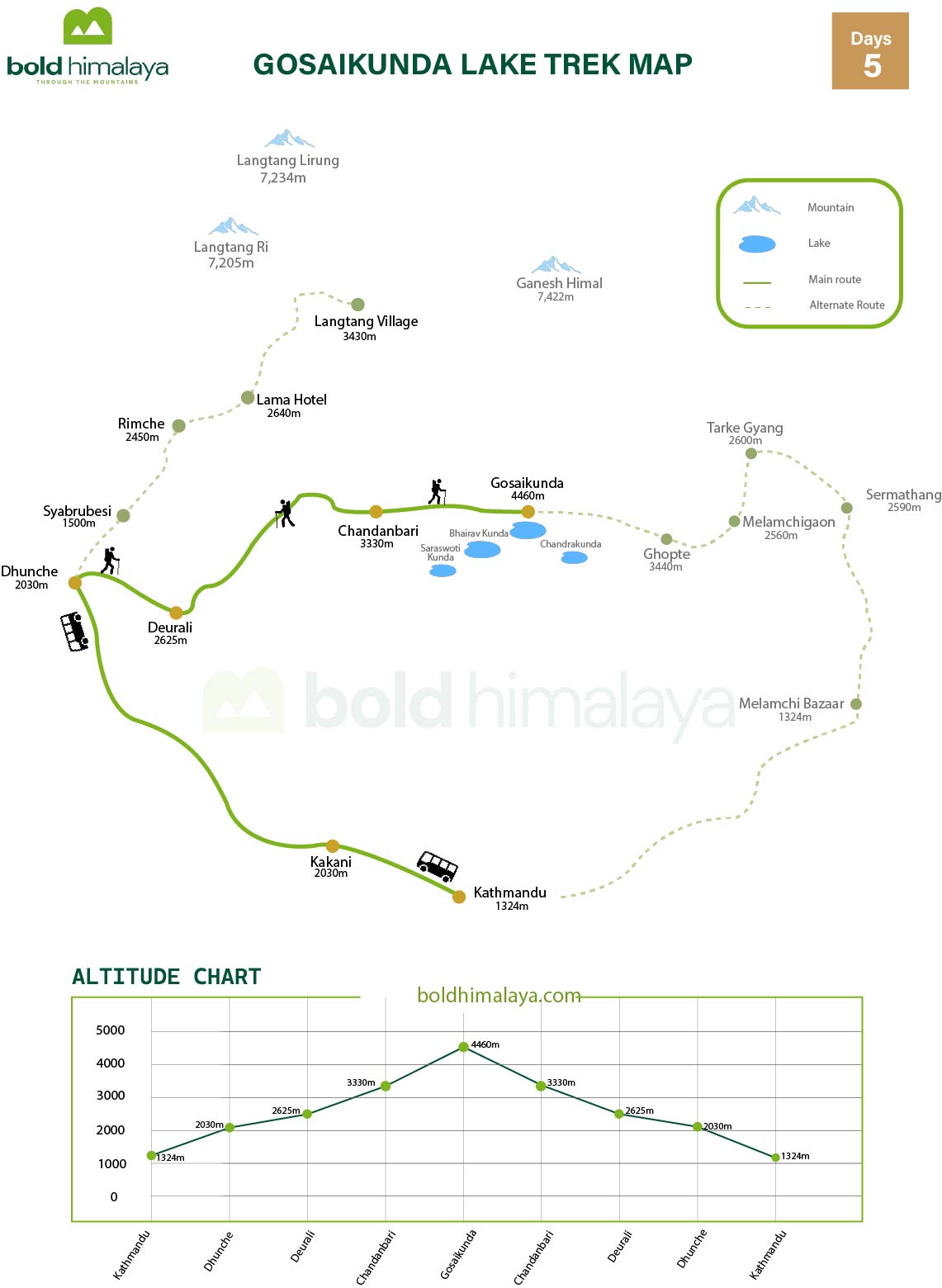
Good to Know
Your Journey, Step by Step
Spring Season for Gosaikunda Lake Trek
The spring (March, April, and May) is the best season for the Gosaikunda Lake trek. The atmospheric and weather condition is favorable in this season which makes the skies and view of mountains and passes clear. Also, being the flower blooming season, trekkers will be welcomed by the pleasurable beauties of flowers like rhododendron and magnolias throughout the journey.
Autumn Season for Gosaikunda Lake Trek
Autumn (September, October, and November)season, when the weather and temperature are pleasant, days are neither hot nor cold in this season, making the environment suitable for trekking activities all over Nepal. The mountain peaks can be seen clearly under brilliant blue skies, and the view of the valleys and high hills becomes fascinating. It is the best season for trekking in Gosaikunda Lake, being awarded with natural advantages throughout the trekking trail.
Summer ( Rainy ) Season for Gosaikunda Lake Trek
The summer season lasts three months: June, July, and August. Normally, in the summer season, Nepal receives heavy rainfall, and clouds occur every day or sometimes all day. Even though the trails are muddy, in August, “Janai Purnima,” a festival of Hindus, occurs. It is the time when Gosaikunda Lake attracts the majority of trekkers as the lake holds the holiest religious significance.
Gosaikunda Lake Trek Winter Season
The winter season (September, October, and November) is pretty cold in the Himalayas. Snowfalls or fogs throughout the way and extremely cold temperatures at higher altitudes might be problematic. So, it is not a good idea to trek during the winter season, but if you are interested, you can do this trek in the winter season too.
The Journey of Holy Lake - Gosaikunda
Gosaikunda, a holy lake, offers various trekking routes for the trekkers, which can be customized according to the trekkers’ interests and time. The journey starts with a scenic drive from Kathmandu to Dhunche (2,030m), which is located on the north side of the Kathmandu valley. The next day, the trek ascends towards Chandanbari, passing through rivers and waterfalls along with the breathtaking views of Langtang Lirung, Ganesh Himal, and the nd Tibetan mountain. After spending a night at Chandanbari, hiking along the Cholangpaty, the views of the mountains become closer and clearer. After passing Lauri Binayak (3,900m) and walking for around 2 hours, Sakyamuki temple, which carries both Hindu and Buddhist values, will be there to welcome you. The trek continues for half an hour until you reach the first lake, the Saraswoti Kunda, the Bhairav Kunda, and then to Gosaikunda Lake – the main destination of this trek at an altitude of 4,380 meters.
After exploring the temples like Shiva Mandir, Gosaikunda Mahadev, and Trishul Dhara around these destinations, the next day is the final day of the trek. The trek retraces back to Lauri Binayak, Dhimsa, and Deurali. Enjoying the magical views of mountains, pine forests, and the flavorful cheese of Chandanbari, the hiking will be more joyful. The observation of protected birds like wood snipe, snow partridge, and Tibetan snow cock will add pikelets to your wonderful journey before reaching DhuncheThehe next day, using a private vehicle, we will head back to Kathmand,u enjoying the beauty of the Trishuli River, meadows, and picturesque settlements on the way, marking the full stop to a lifelong memorable journey to the most sacred lake Gosaikunda.
Gosaikunda Lake Trek Difficulty level
The Gosaikunda Trek offers a mix of moderate challenges. While most of the trails have an incline that’s easy to navigate, there are occasional steep sections that can pose a greater difficulty. The toughest part of the trek is the ascent to Gosaikunda Lake. The day kicks off with a two-hour hike in altitude conditions. The last leg of the journey, where the path evens out and hugs the mountainside, provides some relief for your legs and lungs. Nevertheless, you’ll need both strength and mental resilience as you’ll be walking an average of 5 to 7 hours each day.
When hiking above 3000 meters, altitude sickness could be a concern. However, if you ascend slowly and acclimate well, the trip should not pose any issues. In case you do experience symptoms, make sure to pay attention to the warning signs and descend to an altitude with good IR quality.
Make sure to read Things to Know before going trekking in the Himalayas of Nepal
Preparation for Gosaikunda Lake Trek
Before embarking on the Gosaikunda Trekking adventure, it’s essential for hikers to prepare for the change in elevation. This trek involves navigating downhill terrain for 5 to 6 hours daily with a backpack. It’s recommended not to jump into high-altitude hikes if you’re new to hiking. To get in shape, start incorporating exercise hikes into your routine. This preparation will help you acclimate to the increasing altitude during the trek. Regular jogging can assist in adjusting your body’s oxygen levels. Additionally, engaging in activities such as stretching and moderate aerobics for a month during your journey will help maintain your fitness levels.
It should be quite manageable to complete the trek without any issues, as you are in good physical condition. Additionally, it is important to have a set of gear that will assist you throughout the Gosaikunda Lake Trek. The equipment plays a role in ensuring the success of your journey. Make sure to acquire all the gear that can enhance your expedition from your place. You can also purchase any missing equipment in Kathmandu.
Also, make sure you read Tips and Advice for Perfect Trekking in Nepal
Altitude Sickness Identification and Cure Symptoms of altitude sickness
Inability to sleep
Feeling lightheaded or dizzy
Weary
Headache
appetite decline
vomiting or feeling queasy
breathlessness when exerting oneself
Preventive measures
Make sure to schedule days, for rest during your travel plans
Stay hydrated throughout your journey
Avoid consuming alcohol during the trip
Limit altitude gain to 500 meters per day
Consider staying at lower elevations
Take the time to acclimate properly at lower altitudes
Notify your guide promptly if you experience any symptoms
Don’t overexert yourself physically
Hikers should bring essential items like ginger, garlic and herbs, for health benefits
Eat nutritious meals to maintain high energy levels throughout the trek.
ATM and money exchange
ATMs and the use of ATM cards are common in Kathmandu, but in the trekking area of Gosaikunda Lake, there are no available ATMs. It is recommended to withdraw money while in Kathmandu Valley and carry enough cash with you for the trekking activity. Make sure you are carrying enough Nepali rupees because foreign currency is not used in the trekking area of Gosaikunda Lake.
Communication
While trekking around Gosaikunda Lake, communication options are quite scarce in these areas. Sometimes you might come across villages with mobile network availability. However, once you venture deeper into the trail, you might find yourself off the grid in terms of connectivity. To stay prepared for emergencies, we always bring along a satellite phone. This device uses satellite signals to keep us connecte,d enabling us to make calls and send messages when there’s no mobile network coverage around.
Airport pickup and drop-off
We provide airport transportation for guests who reserve the Gosaikunda Lake Trek. When you land at Tribhuvan International Airport, our staff will warmly welcome you. They will offer you a garland as a symbol of greeting. The, we willn accompany you to your hotel in a vehicle. This service is available to support you in case you face any difficulties winfinding your way.
Trekking Guide and Porter Arrangement
Bold Himalaya provides guides with the deepest knowledge of the Himalayas. They can face any challenges and lead the way. During the trek, you might face some risks like altitude sickness, weather conditions, wildlife attacks, and the Fear of getting lost. But don’t worry, the guide will solve this problem and make you feel safe with a free and delightful trip. The guide has a big role to play in making the journey contextual and excellent. The guide will make your journey pleasant and accompany you in times of danger, and will succeed in winning your heart.
A porter will safely manage your backpack for you. It might be challenging to lug the bag at altitudes, so opting for a guide is advisable. Those who are up for tackling obstacles. The porter will handle all your belongings, allowing you to take in the mountain views. Hiring a porter comes with a cost. It’s wise to pack light and bring only essentials. We suggest that trekkers hire one porter for two individuals, ensuring that the total weight does not exceed 20 kilograms.
Gosaikunda Lake Trek Necessary Documents
- Langtang National Park Permits, Passport, and TIMS Card
Passport & Visa
You must have a passport with a validity of six months from your return date. You have the option to obtain a visa from Nepalese Embassies or Consulates in your country. You can also get it upon arrival at Tribhuvan International Airport in Kathmandu. Please note that citizens of certain countries are required to apply for the visa from their own country. It is your responsibility to ensure you have the visa.
To apply for an on-arrival visa before coming https://nepaliport.immigration.gov.np/
When making your booking, please ensure that you provide complete passport information so that we can arrange all the required permits, tickets, and payments on your behalf. Failure to provide information during booking will result in our being unable to make the arrangements on your behalf, and we cannot be held liable.
Gosaikunda Lake Trek Travel Insurance
Travel insurance is a must for anyone embarking on a journey to the Himalayas. It’s essential for your well-being. Your travel insurance should include provisions for sickness, medical emergencies, accidents, fatalities, trip cancellations, and the loss of belongings. Any expenses related to Emergency Evacuation in Nepal must be settled in cash unless your insurance provider has agreed to cover all costs on your behalf. Be sure that your travel insurance policy extends coverage to activities undertaken in the Himalayas.
Gosaikunda Lake Trek Permits
There are many army points that can check your permits during the Gosaikunda Lake trek. Therefore you require three kinds of permits to do the Gosaikunda Lake trek which are given below:
- TIMS (Trekkers Information Management System) card
- Langtang National Park permit
- Restriction area permit
Packing list
The packing list is also the most important factor for the trekking trip. Gosaikunda is cold, so you must pack warm trekking gear. The packing list for the Gosaikunda Lake trek should include:
- a backpack
- thermal layers
- a fleece shirt or top, thermal layers
- windproof jackets and a down jacket
- a sun hat and sunglasses
- trekking trousers or hiking pants
- a trekking pole
- hiking boots and trekking socks
- multi-use power socket and power bank,
- head torch
- water bottle
- sleeping bag
- first aid kits and toiletries.
Responsible Gosaikunda Lake Trek
We heartily request all our clients to respect the local culture, customs, rules, and regulations while prioritizing maintaining cleanliness to preserve nature and the well-being of the local community. Let’s focus on responsible tourism and leave nothing except footprints, ensuring we leave the pristine untouched and unharmed.
Gosaikunda Lake Trek Cost
The trek to Gosaikunda Lake will be an unforgettable journey where you will enjoy the natural and scenic beauty as well as get to know about its religious significance. This short trek can be customized for family trekkers as well as trekked with friends to enjoy holidays in the high Himalayas. The cost for this trek is the least expensive, including all types of facilities like transportation according to the itinerary, accommodation, food during trekking, a guide, and a hotel at Kathmandu. The average cost for the Gosaikunda Lake trek is around US$270 to US$500 500 depending on group size.
Expandable Trips
Gosaikunda short adventure trek, if you wish to expand the journey, you can ask your guide, he will provide you with an excellent expandable trek to combine with the Tamanag Langtang Valley Ganjala Pass Trek, Langtang Valley trek, and 1-day Surya Peak Climb.
Gosaikunda with Tamang Heritage trek
This trek offers forests, swift mountain streams, rugged rock, and snow-capped mountains, grassy meadows, glaciers, the holy lake of Gosaikunda, and a chance to observe Tamang culture at close quarters. On the trek, there is the possibility of observing some of Nepal’s stunning wildlife, such as langur monkeys, Himalayan Thar, Tibetan snow cock, and the snow partridge. From Surya Peak, the highest point on this trek, you will marvel at the mountains all around you, including the Langtang range, Ganesh Himal, and Manaslu.
Gosaikunda with Helambu trek
This expanded trek is famous for its own natural beauty, wonderful climate, and magnificent views of snowy mountains. The trek offers a variety of natural scenery and the experience of a jungle walk. This trek is also famous for sub-alpine vegetation and wildlife such as birds, deer, monkeys, and thars.
Gosaikunda with Langtang valley trek
Gosaikunda with Langtang Valley trek is the best-expanded trek to observe mid-hills, high-altitude lakes, including the Gosaikunda and other Himalayan glaciers. The trek will let you experience the deep gorges, wildlife, birds, and vegetation within Langtang national park, mythical monasteries, picturesque villages, hillside terraces, serene valleys, and breathtaking glaciers of the high mountains.
1-day Surya Peak Climb
Surya Peak is situated north of Gosaikunda Lake. The peak is easy to climb and takes around 4 hours to reach the top without any technical difficulties. The trek will provide you with an opportunity to explore the wildlife, lakes, lush forests, view of majestic mountains, and even peak climbing over 5,000 meters. It is an excellent addition to those trekking in the Langtang and Gosaikunda regions or a good acclimatization summit for larger Himalayan Peaks.
Extension of trips
After a 4-day short adventure Gosaikunda trek, if you wish to extend the journey, then we provide you various options for trip extensions to other regions. In addition to trekking experience, you can have other adventure trips such as rafting at Trishuli River, paragliding and bungee jumping at Pokhara, rafting at Trishuli River, Chitwan National Park Jungle Safari, and a religious tour to Lumbini. If you want other options then you can check out Best Things to do from Kathmandu after the trek.
We are here to assist you in planning and arranging the perfect itinerary to fulfill your travel aspirations beyond the Gosaikunda Lake.
Best Treks in Nepal
There are numerous options for trekking in Nepal, ranging from easy to difficult ones. The distinctive physical characteristics of Nepal enshrine a lovely Himalayan environment with cultural wealth. Trekkers in Nepal get to experience all the beautiful destinations have to offer. There are, in fact, many options for adventures, including travels and trips suitable for beginners.
FAQs
Your Questions, Answered
How difficult is the Gosaikunda Lake trek?
The trekking routes are mostly ascent and descent on the mountain terrain through the forests. The highest altitude of this trek is 4,380 meters (14,370 feet) and each day you will walk around 6 to 7 hours. It’s not that hard but quite difficult to reach an altitude higher than 4,000 meters so the trek is graded as a moderately difficult trek.
What permits are require to do Gosaikunda trek?
Trekkers need Langtang National Park permits and Trekking Information Management System permits to do the Gosaikunda trek.
Is Gosaikunda holy lake for Hindus only?
Gosaikunda Lake is a holy place for both Hindu and Buddhist religious groups. During the festival Janai Purnima, thousands of Hindus and Buddhist devotees go to Gosaikunda Lake.
Where does Gosaikunda lie?
Gosaikunda lies in the Rasuwa district as in the map of Nepal. Geographically, Gosaikunda Lake is in the lap of the Langtang Himalaya range.
It is located between the Helambu trekking trail and the Langtang trekking trail. In other words, it connects the Rasuwa district with the Sindhupalchowk district.
How many lakes are there in Gosaikunda area?
It is believed that there is a total of 108 holy lakes in the Gosaikunda area which includes Saraswoti Kunda, Bhairab Kunda, Surya Kunda, Naga Kunda, Gosi Kunda, and many others.
What are the importance of Gosaikunda lake?
Its waters are considered holy and of particular significance during the Gangadashahara and the Janai Purnima festivals when thousands of pilgrims from Nepal and India visit the area. According to legend the spring that feeds the pond in the Kumbheshwar temple complex in Patan is connected to Gosaikunda.
How's the food, at Gosaikunda Trek?
When you go on a holiday to a destination one of the concerns is always, about the food. When you travel with Wilderness Excursion you get to savor a variety of dishes ranging from Nepali cuisine to continental, Italian, Chinese and other international fare. You’ll enjoy lunch along the way. Have breakfast and dinner arranged at the lodge or tea house where you’re staying.
Is drinking water available on the route?
While on the trek you have the option to purchase water. Disposing of plastic can pose significant environmental challenges. We offer purified mineral water for your trekking needs. You can also find mineral water at tea houses for an extra charge. Opting for mineral water is recommended over water for a choice.
How are the accommodations, during this trek?
We offer lodging in trekking lodges on a twin sharing basis. Please note that accommodations in Kathmandu are not included in the package. Throughout the trek tea houses serve as the accommodation for trekkers. These tea houses offer amenities. While some may have separate rooms, at higher altitudes rooms typically consist of two beds, blankets and minimal furniture. In the tea houses solar electricity is available; however nowadays most tea houses also provide electricity, for charging cameras, mobile phones and other small devices.
When is the ideal time to go trekking to Gosaikunda Lake?
The best period, for trekking depends on the weather conditions. Autumn (September to November) and spring (March to May) are considered the seasons for trekking in the Himalayas including Gosaikunda. The monsoon rains during summer (June to August) can impact the trekking experience. While winter trekking is possible the temperatures can be quite harsh for hikers. Trekking in monsoon season offers a chance to admire alpine flowers in altitudes making it appealing for botanical enthusiasts. Additionally summer treks tend to be quieter, with trekkers around.
Is it possible, for a novice hiker to visit Gosaikunda Lake?
Absolutely this spot is perfect, for beginners looking to tackle their challenging trekking experience.
Is it possible to use my ATM card while trekking around Gosaikunda Lake?
In Kathmandu you can find ATMs and credit card terminals for your convenience. Additionally cash payments are often necessary, for services, along the way.
Do they have electricity and Wi Fi at Gosaikunda Lake Trek?
The accommodations where you’ll stay overnight during the trek are equipped with power outlets. You can pay a fee to charge your devices like phones, cameras or iPads. It’s advisable not to carry a laptop if you plan to use the limited Wi Fi that isn’t accessible, along the trekking route. While some teahouses offer Wi Fi on a basis don’t expect internet speeds, in remote areas.
How likely is it to experience altitude sickness while trekking in Gosaikunda?
Altitude sickness is frequently encountered in this region due, to the elevation exceeding 3000 meters. Acute Mountain Sickness occurs as oxygen levels decrease and air pressure diminishes.
Where can I keep the things I don't need while trekking in Godaikunda?
You can utilize the storage service provided by the hotel, in Kathmandu. Feel free to leave behind any items that are not essential for your journey either at your hotel or, at our office.
What will happen if a trekker become ill while on the Trek?
If someone falls ill during the Godaikunda Trek and requires assistance an assistant guide will go with the trekker if they need to come down due, to their illness. This won’t disrupt the groups experience as the person going down will receive care. The guide will manage any emergencies based on how serious they’re a helicopter might be called in for evacuation, in cases.
View OurSimilar Packages
Discover our top tours, loved by thousands of travelers annually. Choose the adventure that inspires you and embark on a journey tailored to your desires.
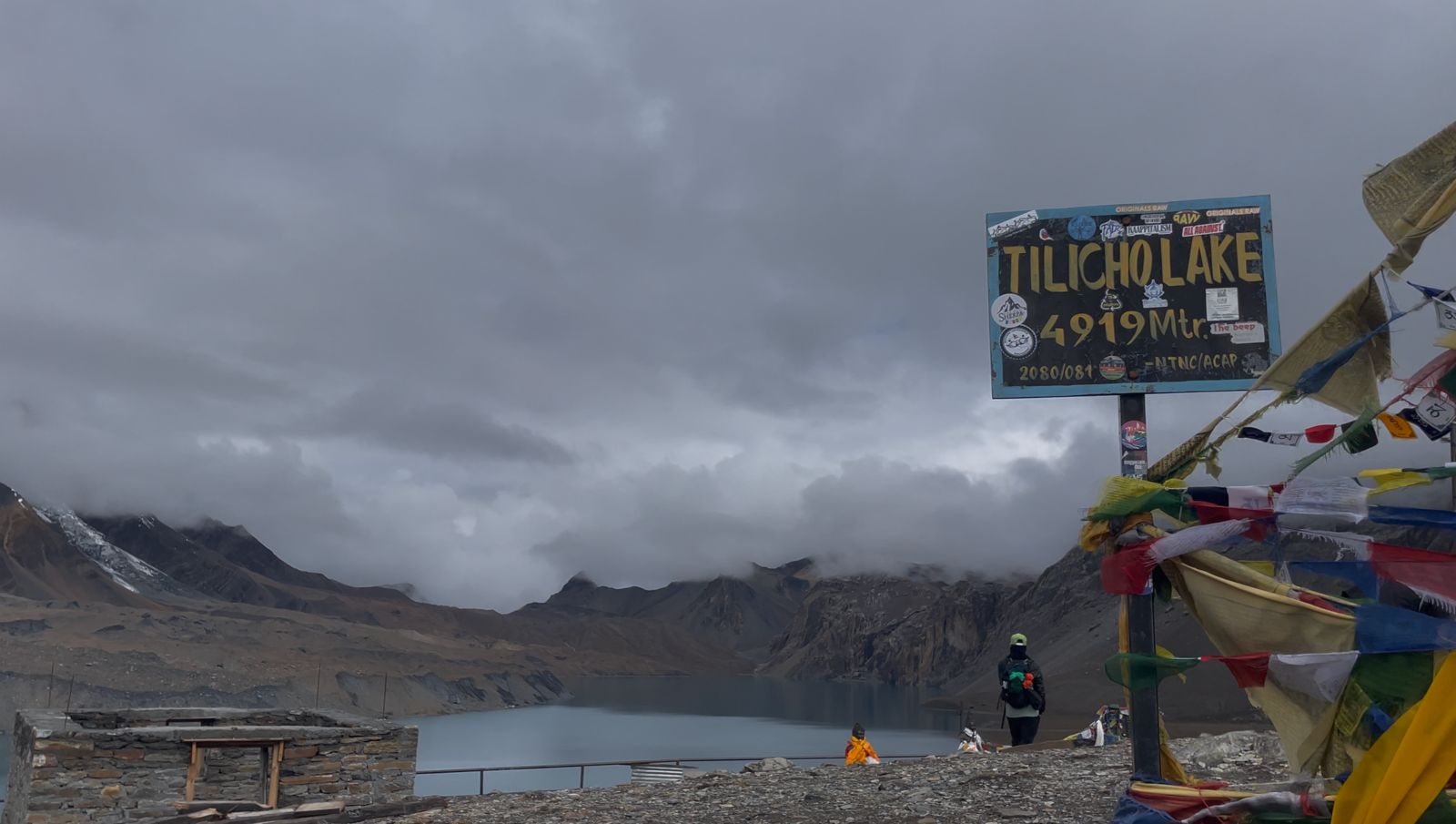
Save 22%
Annapurna Circuit Trek with Tilicho Lake
Imagine you walk up to a golden light that shines on...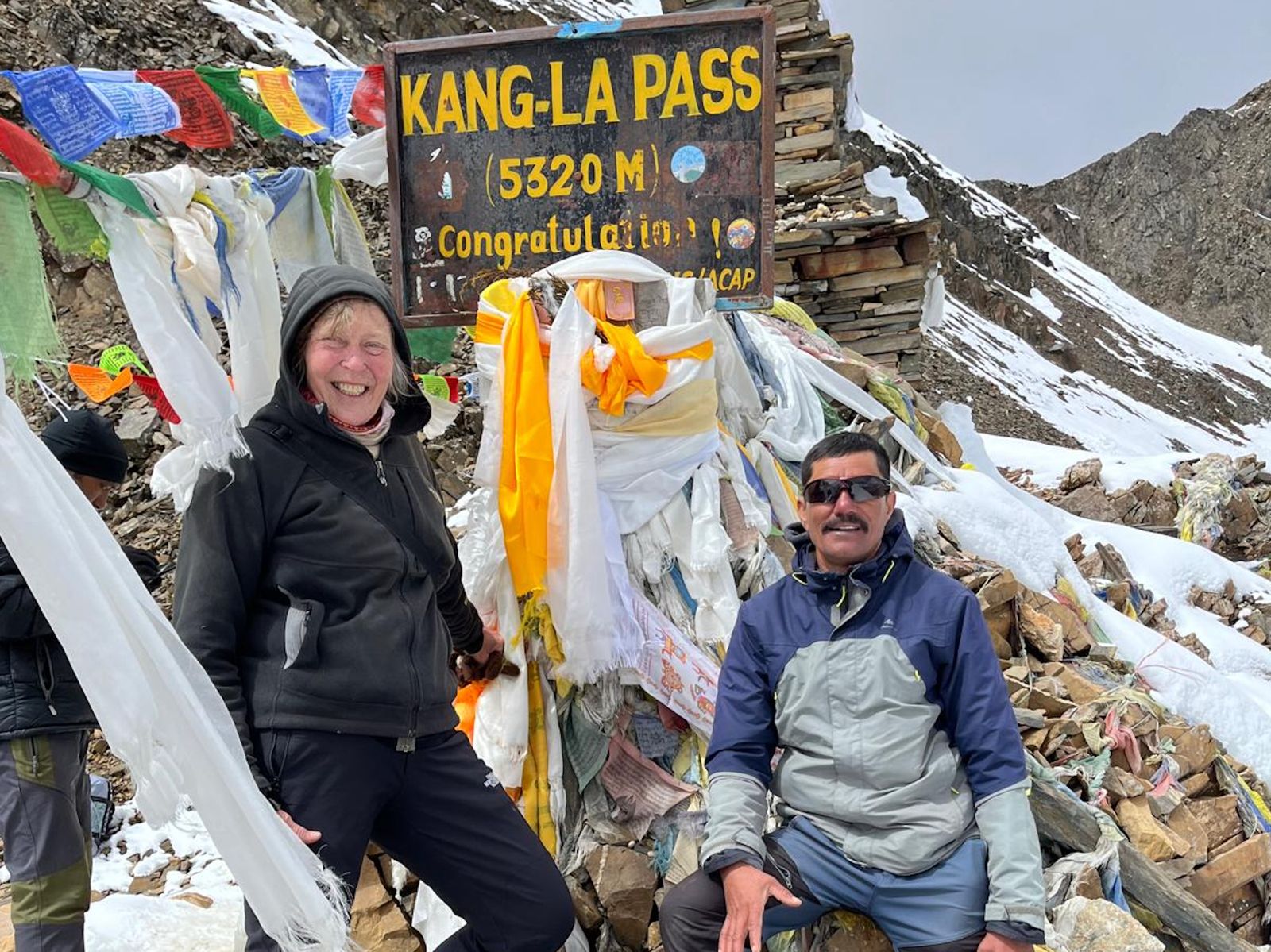
Save 28%
Nar Phu Valley Trek
Hidden in the fantasy landscapes of Nepal’s mythological Annapurna and Manaslu...
Upper Dolpo Jomsom Trek via Upper Dolpo Region
Highlight The Dolpo region was opened in 1989 with the Shey...





